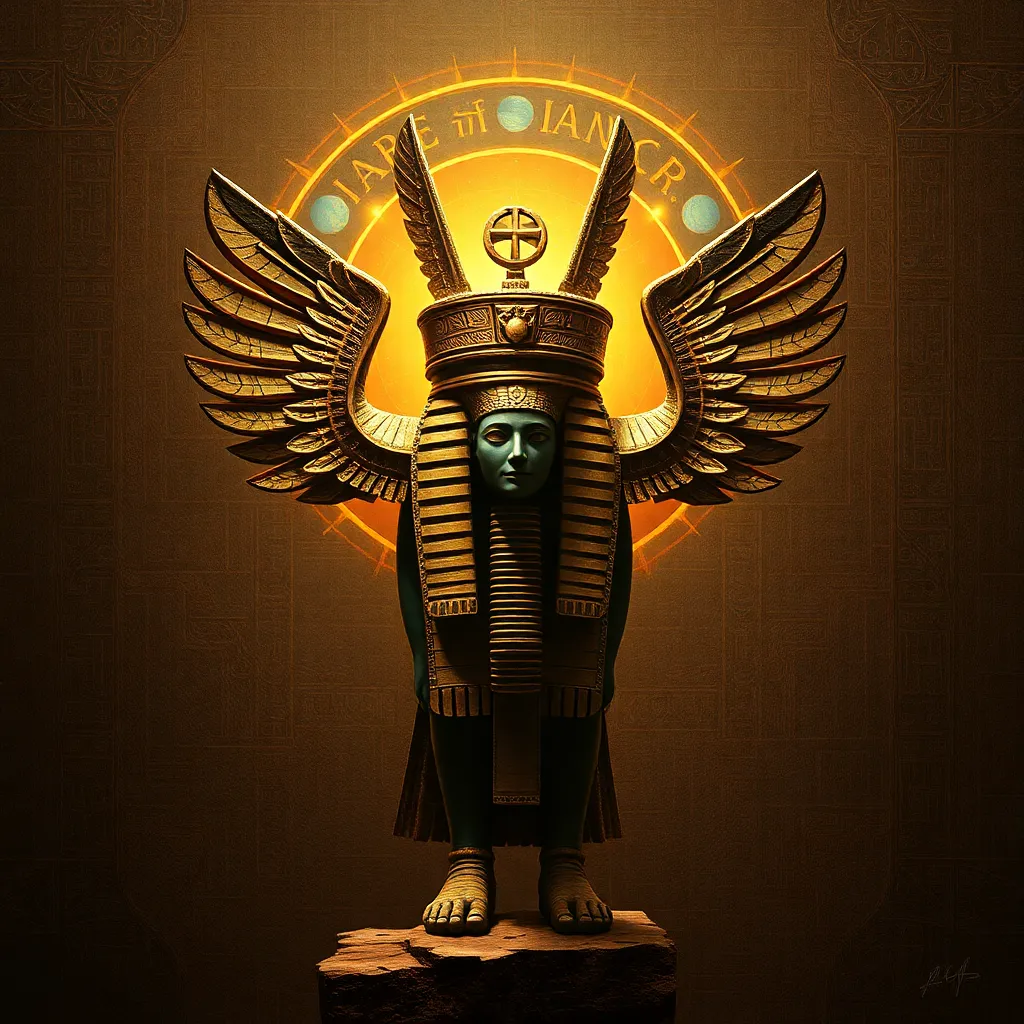The Aten and the Concept of Divine Love
I. Introduction
The Aten, a significant deity in ancient Egyptian religion, represents the sun disc and is often associated with light and life. Unlike many Egyptian gods, the Aten was worshipped as a singular entity, especially during the reign of Pharaoh Akhenaten, who elevated its status above other deities. This article explores the Aten’s role as a symbol of divine love, drawing parallels with similar concepts in various cultures.
Divine love is a theme prevalent in numerous cultures, often characterized by unconditional affection and protection from a higher power. In this context, we will delve into the relationship between the Aten and the concept of divine love, examining its implications for ancient Egyptian society and its relevance today.
II. Historical Context of the Aten
The origins of the Aten can be traced back to the early dynastic period of ancient Egypt, where solar deities were already being worshipped. However, it was during the reign of Amenhotep IV, who later became known as Akhenaten, that the Aten was elevated to prominence. Akhenaten instigated a religious revolution by promoting the Aten as the singular god of the universe, effectively shifting Egyptian beliefs from a polytheistic framework to a more monotheistic approach.
This radical transformation had profound effects on Egyptian society, as it challenged the established order of religious practices and beliefs. Temples dedicated to traditional gods were closed, and the worship of the Aten was centralized. This shift not only impacted religious practices but also influenced art, culture, and the political landscape of Egypt.
III. The Aten as a Symbol of Divine Love
The Aten is characterized by its association with light, warmth, and nurturing qualities. In ancient Egyptian thought, the sun was more than just a celestial body; it was a source of life itself. The rays of the Aten were often depicted as hands reaching down to bless and provide for humanity, symbolizing a divine love that is both protective and sustaining.
- Light: Represents clarity, truth, and guidance.
- Warmth: Evokes feelings of safety and comfort.
- Nurturing: Indicates a protective, parental love that fosters growth.
The Aten embodies the notion that divine love is inherently linked to the act of creation and sustenance. In this context, the sun’s role as a source of life signifies that the Aten’s love for humanity is expressed through the provision of essential resources such as food, water, and shelter.
IV. The Aten’s Relationship with Humanity
Art and literature from the Amarna period, which corresponds to Akhenaten’s reign, reveal the Aten’s intimate relationship with humanity. The Aten was often depicted alongside the royal family, emphasizing the connection between the divine and the earthly. This portrayal reinforced the idea that the Aten’s love was accessible and personal.
The concept of divine love in this context can be seen as a reciprocal relationship. Followers were encouraged to acknowledge and honor the Aten, fostering a sense of community and connection among worshippers. This communal aspect of worship helped to solidify social bonds and create a shared identity based on reverence for the Aten.
V. The Aten in Comparison with Other Deities
The Aten’s unique position as a singular deity contrasts sharply with the polytheistic pantheon of ancient Egypt. Traditional gods like Osiris, Isis, and Horus had specific roles and domains, while the Aten encapsulated the essence of life itself. This monotheistic approach also bears similarities to the divine love expressed in Abrahamic religions—Judaism, Christianity, and Islam—where a single, all-encompassing deity provides love and guidance.
Some notable contrasts and similarities include:
- Contrasts:
- The Aten’s singularity vs. the multiplicity of traditional gods.
- The Aten’s focus on universal love vs. the specific attributes of other deities.
- Similarities:
- The concept of a loving deity who cares for humanity.
- The idea of divine protection and guidance in daily life.
VI. The Decline of Aten Worship
After Akhenaten’s death, the worship of the Aten began to decline rapidly. Several factors contributed to this decline, including a backlash against the monotheistic practices and a restoration of traditional polytheistic beliefs. Successors like Tutankhamun reinstated the worship of the old gods, leading to the erasure of many of Akhenaten’s reforms.
The implications of this shift were significant, as the concept of divine love became intertwined once more with a pantheon of deities, each representing different aspects of life and existence. The historical legacy of the Aten, however, lived on, influencing later monotheistic thought and spirituality.
VII. Modern Interpretations of the Aten and Divine Love
Contemporary scholars have revisited the significance of the Aten, recognizing its role in the evolution of religious thought. The idea of divine love as presented through the Aten resonates with modern spiritual practices that emphasize connection and love between the divine and humanity.
In today’s context, the concept of divine love remains relevant, as spiritual seekers explore the intersections of ancient beliefs and contemporary spirituality. The Aten’s influence on monotheism offers a rich tapestry for understanding how love is perceived in different religious traditions.
VIII. Conclusion
In summary, the Aten represents a unique manifestation of divine love that transcends the traditional boundaries of ancient Egyptian religion. Its historical context, characteristics, and relationship with humanity illustrate a profound understanding of love as nurturing and protective.
Reflecting on the enduring legacy of the Aten reveals how ancient beliefs continue to resonate within modern spirituality. The exploration of these intersections invites us to deepen our understanding of divine love and its significance across cultures and eras.
As we uncover the rich tapestry of the Aten and its implications, we are encouraged to explore how these ancient concepts can illuminate our contemporary spiritual journeys.




